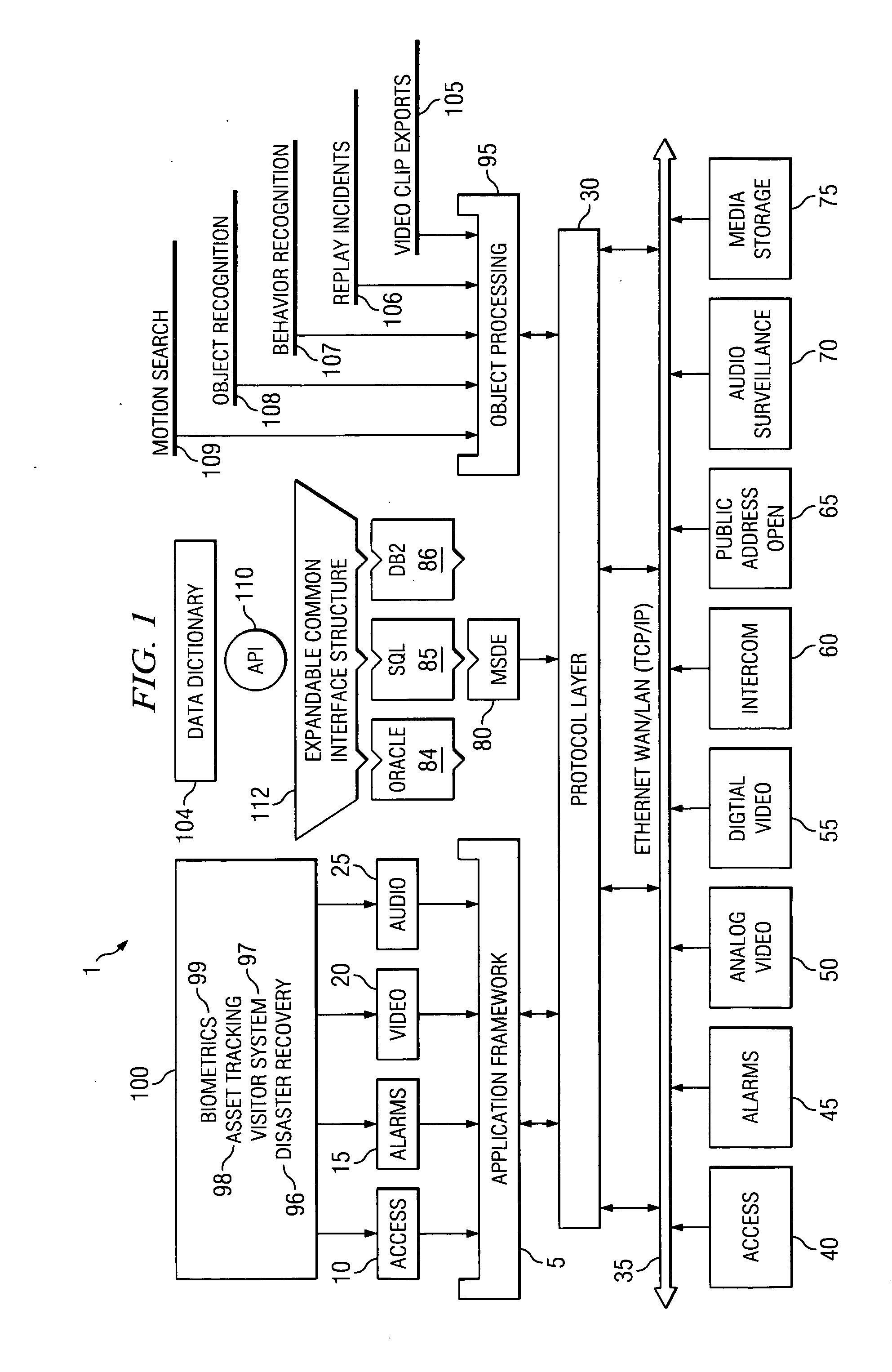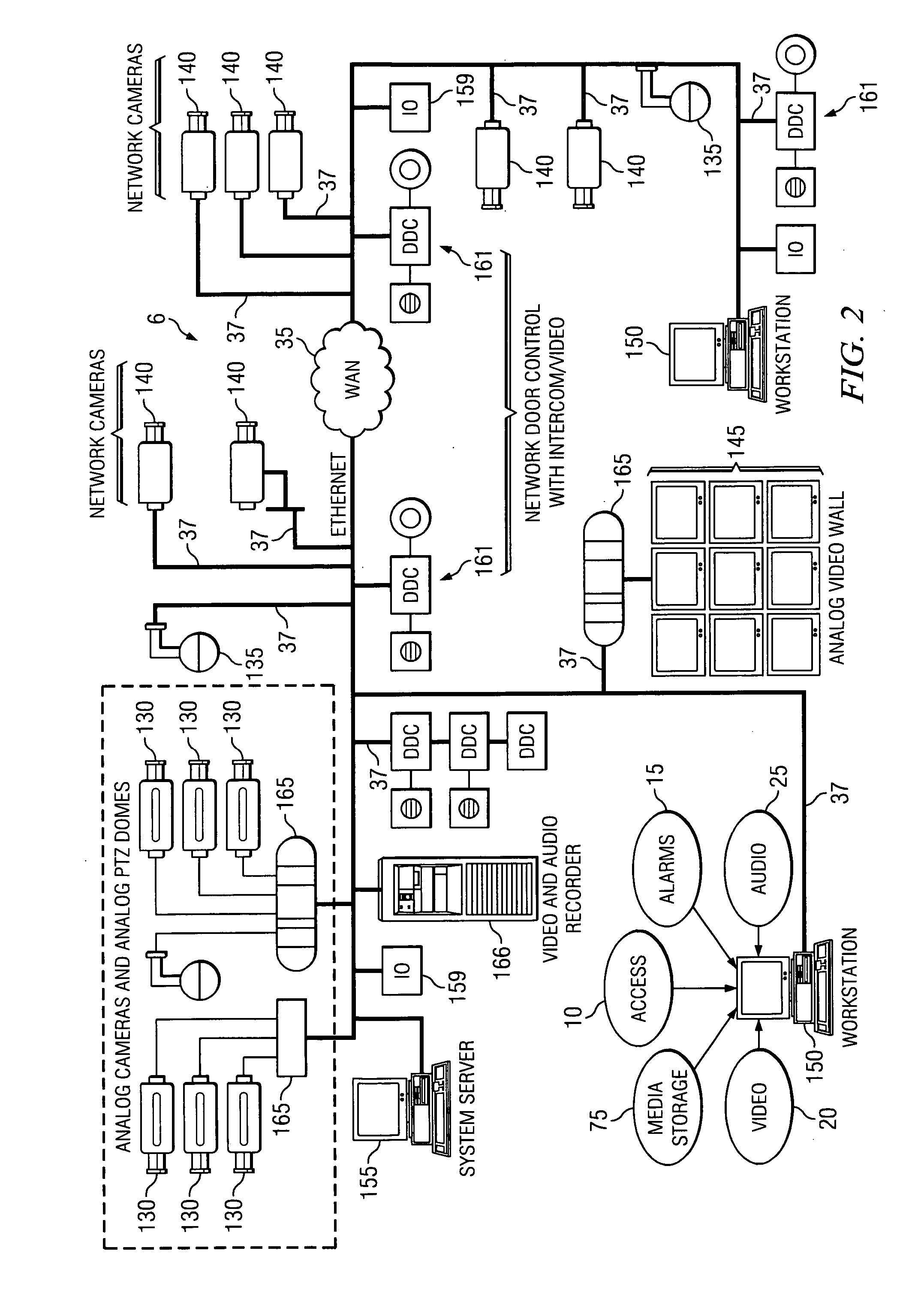[0012] Different embodiments of the modular
security system are capable of integrating dispersed systems back to one or more central control centers for local and remote monitoring. The modular
security system can be enlarged virtually without limit. The modular
security system allows the deployment of equipment to meet the customers' requirements and allows
scalability to be instituted for a few devices at many sites, many devices at a few sites, or many devices at many sites.
[0013] Additional embodiments of the present invention allow for workstations to be connected to servers on a network without the need to change user interfaces. Once a
workstation is connected to a
server, the
workstation will receive activity from that
server just as if the system were connected to a
single server. Additionally, the present invention can connect small sites to a
single server via networked field controllers, or can connect to servers from across the country or around the globe.
[0014] Other embodiments of the modular security system provide for a digital media system (DMS) that controls most aspects of the technologies required to provide a digital alternative to analog CCTV. Features of the DMS comprise high-quality audio & video
digitization, compression and transmission through the use of high-fidelity, full-resolution and high frame-rate compression techniques. A major portion of the hardware included in the present invention enables direct-connect
Ethernet communications to system computers, field controller panels, fixed or dome cameras, and digital media
recording system (DMRS) servers. Direct
Ethernet connection results in a simple and cost-
effective method for equipment installation.
[0015] The DMS provides LAN and WAN access via
Ethernet connectivity based on TCP / IP communications for unrestrained
scalability of numbers of deployed units that are useful in localized and global applications. The DMS further provides plug-and-play devices that allow for simple, convenient, and rapid deployment of digital media networks. In the DMS, whenever devices are attached to a network, device management software can immediately begin communicating with each device, allowing for immediate inclusion of that device into the modular security system. If devices are replaced, the previous device's configuration can be stored and imported into a
new device, thereby reducing the amount of time any particular environment is unprotected.
[0016] In another embodiment, all monitors and recorders are connected to a central network and have access to all video channels being transmitted on that network. Just like analog systems, and unlike most digital systems, there is no degradation when more than one viewer connects to a video channel because the video is already at full resolution and full
frame rate. For similar reasons, which distinguish it from other digital solutions, the DMS rules do not degrade the
video quality on the
core network when a video channel is “exported” across an external network, such as
the Internet or an ISDN line. By utilizing the same core /
external data-rate buffering technology, the DMS also allows immediate & real-time review of recorded video at playback stations, even when the playback stations are separated from the recorder by an external network. This aspect of the DMS removes the need to first transfer or buffer the video clip at the playback
station, an aspect which uses both the operator's time and the network's bandwidth inefficiently and unnecessarily. When an interesting recording has been found, that recording, or a portion of it, can be exported to the operator's
workstation, where it can then be viewed in the high-fidelity at which it was recorded.
[0017] Consequently, a video-switching network can be expanded by simply attaching new cameras or monitors or recorders, updating the management software with the details of the new devices and enabling the new
system configuration. There is no re-wiring or component to
upgrade. One of the key areas enabled by moving to networked devices is the ability to control and monitor multiple devices at any time. With this level of simplicity, video switching and installation costs are reduced while expanding the level of operational capability.
 Login to View More
Login to View More  Login to View More
Login to View More 


